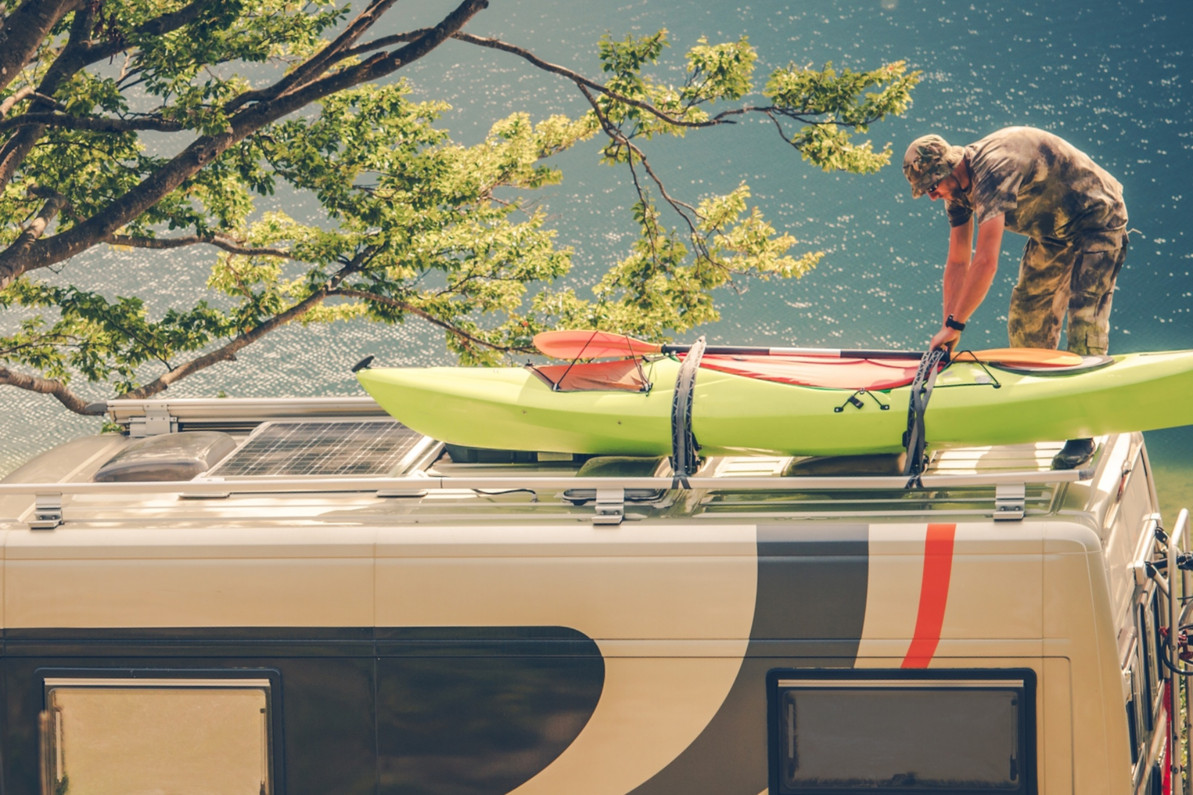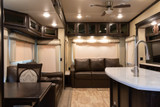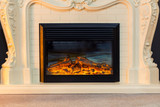Staying Active on the Road
Routines help us to stay consistent throughout our everyday lives and accomplish our daily tasks. Daily routines such as eating a healthy breakfast, exercising, or going to sleep around the same time every night can benefit your health in several ways. Daily and weekly routines can help you develop healthy habits, get better sleep, experience less stress, and avoid burnout. The great thing about routines is that you don’t really need to think about doing them once a habit is formed. Sometimes though, life gets hectic, and we find ourselves breaking from our routines. Travel may also be a reason for neglecting routine. It can sometimes be difficult to restart a routine once the habit is broken.
RV travel offers the unique experience of bringing your home with you on the road, which can help you better stick to your routines, even on vacation! Exercise is a healthy habit that can strengthen your muscles and bones, reduce the risk of disease, and improve your mood. It may not seem like it, but there are so many options for exercising on the road, especially when you have a motorhome or camper.
Outdoor Recreational Activities
Exercising doesn’t need to be complicated and shouldn’t feel like a chore. RVs can take you to some wonderfully beautiful places, and what better way to experience these places than getting out and experiencing them up close? Outdoor recreational activities can range from light to vigorous intensities and vary depending on your fitness level and location.
Hiking

Hiking is all about being out in nature and moving your body. Hikes can range from a light-intensity stroll to an active full-day excursion. When hiking, it is crucial to plan ahead and account for your current fitness level when planning your trips. Hiking can be a fun, leisurely activity but can pose safety risks if you are not careful or are unprepared.
You can prepare for a hike by previewing the route you plan to take, packing plenty of water for the trip, and checking the weather beforehand so you can dress accordingly. Comfortable, sturdy footwear is always recommended when hiking. For clothing, layers are good for maintaining a comfortable body temperature and can offer some sun protection.
Biking
Biking is a great way to get around and see new places. You can go farther than walking and access places you cannot get to in a car. Whether you choose to hit up the trails for some mountain biking or take a ride into the nearest town using side roads, riding a bike is a fun cardio workout that can also help you build muscle.
If you have a bike you would like to bring on your travels, there are various bike racks that work well for mounting to motorhomes and RVs. Ladder-mounted, bumper-mounted, and hitch-mounted are all great options depending on the configuration of your camper and how many bikes you plan to carry.
Kayak/Canoe/SUP
Spending time on or near bodies of water can feel like an instant stress-reliever. Maybe it’s the relaxing sound of crashing waves and babbling brooks or the salty smell of the ocean that calms us down, but whatever it is, people are drawn to it. Kayaks, canoes, and stand-up paddleboards are great ways to experience the local waterways up close and also provide a solid workout. Paddling sports can increase your upper body and core strength in a low-impact way.
If you don’t have a kayak, canoe, or SUP, nor the space to transport one, you can often find rentals for water sports equipment near popular bodies of water. Those who want to bring their own equipment can invest in a kayak rack for quick and easy access.
Campground Amenities
If you are staying at a campground, fun activities may be available to help you reach your activity goals. There are even some online resources that allow you to search campgrounds based on available amenities. You can also always call ahead and ask what the park offers so you can plan your routines during your stay.
Walking Path
Many RV campgrounds have walking paths, some more extensive than others. These walking paths are nice and feel similar to a neighborhood stroll at home. Walking trails will often tell you how long they are so you can track your distance and offer an opportunity to mingle with other campers. The nice thing about walking paths is that they are usually less intense than hiking trails and often feature a paved or gravel path. Also, you can worry less about things like poison ivy and snakes since you are walking on a cleared pathway instead of tall grass or brush.
Sports Courts

From basketball and sand volleyball to pickleball and tetherball, you can never be sure what type of sports courts may be available at the campground. Most of the time, if a campground has some sort of court, they have the associated equipment available for rent. However, this may not always be the case, so you should double-check if you anticipate using these options.
Kids can stay entertained for hours at a time and release some energy before it’s time to pack up in the camper for the night. Some campgrounds may run tournaments or leagues as a fun activity for campers. Whether you’re just messing around or having a serious match, sports courts are a fun way to get your body moving!
Swimming Pool
Swimming pools are the perfect place to relax on a hot day, but they are also good for getting in a bit of exercise. Swimming is an efficient way to burn calories and gain muscle without exposing your joints to harsh impact. Swimming for 30 minutes can burn around 250 calories, whereas a half-hour walk only burns about 150 calories. If there’s not enough room to swim laps, you can still get a decent workout by treading water in one spot. Water provides greater resistance compared to air, so your body has to work a little harder to move around in it.
Fitness Center
Some RV campgrounds have an on-site fitness center for guests to use during their stay. As mentioned earlier, you can search for campgrounds based on specific amenities, such as whether or not there is a fitness center. This can be helpful, but keep in mind that not all fitness centers are created equal. A fitness center may imply a commercial-like gym with a large variety of equipment, but it may also mean a couple of stationary bikes in the corner of the check-in lobby. If you plan to utilize the fitness center at a campground, it is always a good idea to check what is available for you to use during your workout. They may not have everything you need to achieve your goals.
Extended Access Gym Membership
If you are a committed gym-goer, it can be frustrating to lose gym access when you are away from home, especially when you still have to pay for the membership, even if you don’t use it for extended periods at a time. Numerous gym chains around the country offer a single membership which grants access to all of their facilities. For frequent travelers, this may be an excellent option, but it is not guaranteed that the gym chain you are a part of has a facility in the location you are traveling to.
If you decide to get a multi-facility membership, you should do a little bit of research beforehand to get an idea of how many facilities would be available to you and where they are located. Some chains may be limited to certain regions or only present in larger cities. Many of these gyms have a locator on their website, showing you a map of all locations. In addition to working out, these gyms will typically have full bathrooms, which include a shower and are often cleaner than rest stop facilities.
Portable Gym Equipment
If the traveling gym membership seems like too much planning, you could always just bring the gym with you on your travels. While traditional gym equipment is much too heavy and bulky to carry around in your RV, there are many creative solutions for portable gym equipment.
Yoga/Exercise Mat

While you don’t technically need a mat to do yoga, it does help give you a grip for balancing poses, provides cushioning for your joints, and gives you a clear, flat surface to move on. A yoga mat can be helpful for any type of body weight exercise though, and is easy to travel with. If you have internet access during your trips, you can find a plethora of free guided exercises and yoga videos online that don’t require any equipment.
Resistance Bands
Resistance bands are incredibly versatile and take up hardly any space at all, making them an excellent option for on-the-go exercise. As the name implies, these bands provide varying levels of resistance to train your muscles without heavy weights. Resistance bands can be used for upper or lower body strength training, as well as stretching.
Jump Rope
Watch any boxing movie and there will be a shot of someone jumping rope in the gym. Jumping rope is a cardiovascular workout as well as a full-body strengthener. From your toes to your shoulders, your muscles are being engaged to jump, land, and swing the rope. It can be tricky to get your coordination and timing down at first, but it will come with a little practice. People who jump rope regularly incorporate tricks and techniques to keep the exercise interesting. If you get really good, you can even mix music into your routine for an exciting change of pace.
Refillable Weights
When packing up your RV or camper, it is important to keep in mind the GVWR, or gross vehicle weight rating, which is the maximum recommended weight amount that your RV can safely support while driving. Unnecessary weight can add up quickly, even if it doesn’t seem like a lot individually. Because of this, carrying around legit weights for lifting isn’t the most realistic option. There are various options of weights that are designed to be filled with water for use, then emptied for storage. Kettlebells, dumbbells, and heavy bags are the most common options available in various capacities. Water weighs around 8.3 pounds per gallon, so the weight will depend on how much water the equipment can hold.
How do you stay active on the road? What’s your favorite exercise routine that fits into your RV travels? Let us know in the comments!
Recent Posts
-
Can You Put Regular Furniture in an RV?
Many new and old RV owners ask themselves this question when they feel the need to update th …Apr 25th 2024 -
4 Tips for Securing RV Furniture While Traveling | RecPro
How To Secure RV Furniture There are few things that beat going out on an adventure with an RV …Apr 25th 2024 -
How To Keep RV Furniture From Peeling
Peeling RV Furniture | Why it Peels and How to Stop it Your RV furniture is a point of pride on yo …Apr 25th 2024 -
Turning up the Heat With an RV Fireplace
There’s an unlimited number of cool and exciting features you could add to your recreational vehicle …Apr 25th 2024 -
How To Install An RV Fireplace
A Warm Addition to Your On-Wheels: The DIY RV Fireplace Installation Guide Many RV enthusiasts ask …Apr 25th 2024 -
Are RV Electric Fireplaces Safe
Being Safe in Your RV with an Electric Fireplace Safety is always going to be one of your highest …Apr 25th 2024







